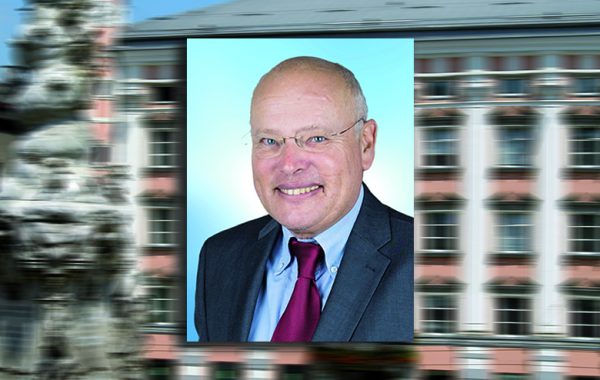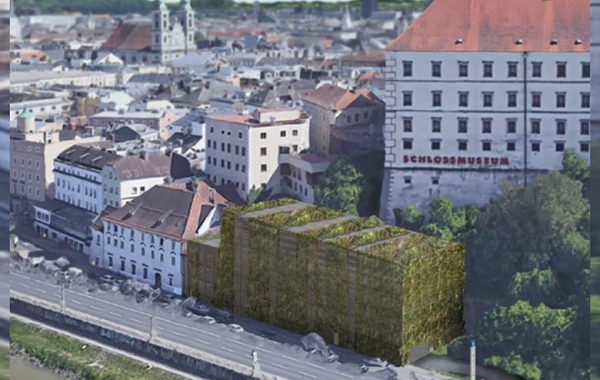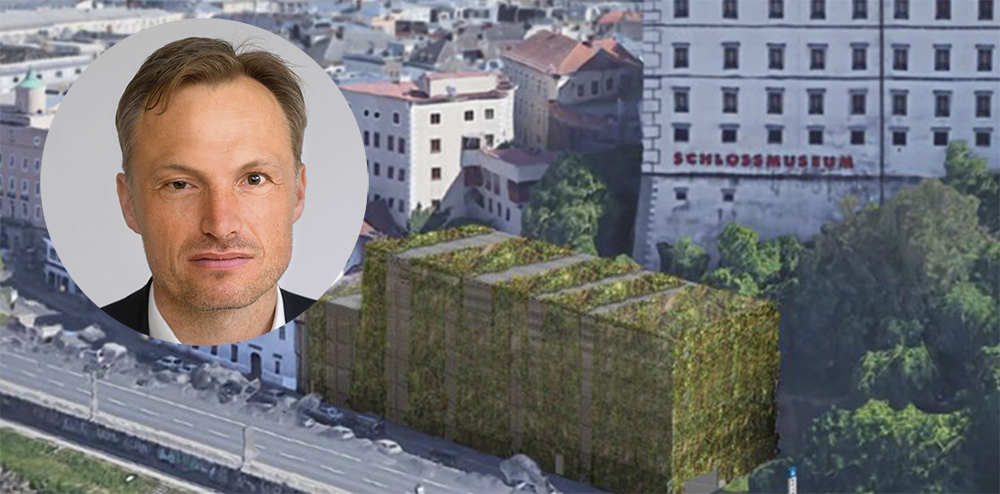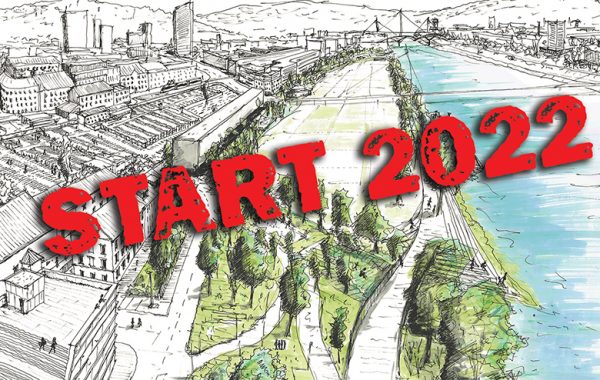10
Published on November 8, 2021
0
–
–
The publicized plans for a multi-storey car park on the Obere Donaulände, for which a historic 450-year old salt barn would have to be demolished, are still being criticized. The renowned architect, urban developer and member of the Urban Planning Commission, Andreas Kleboth, has other ideas and sees great potential for the area there. “The idea that the old town and also the main square have direct access to the Danube without the caesura of the busy road is very appealing,” said Kleboth in the LINZA Talk.
What were your first thoughts when you heard about the plans for the planned multi-storey car park on the Donaulände?
The careless and largely reckless use of resources, land, and lack of concepts and ideas are not particularly noticeable in most urban regions. Only when these projects are to be implemented right in the heart of the city, as is now the case in Linz, will it become apparent to the general public how little concept and overarching thinking are behind them. It is the same with transport projects. We still give car traffic a lot of freedom and plenty of space.
We have been conducting a climate discussion for years and want to make Linz the climate capital. How does that fit together with another large parking garage that will pull even more cars into the center?
Indeed, I find it remarkable that such a project turns up at exactly the time you described. The self-imposed goal of making Austria climate neutral by 2040 is a blatant contradiction to this idea. Public interest in an urban space worth living in and the preservation of historical building fabric do not in any way go together with the one-sided interest of some project developers and their simple concepts of making economic profit.
The self-imposed goal of making Austria climate neutral by 2040 is a blatant contradiction to this idea.
Andreas Kleboth
Why is this construction project causing such a stir?
Firstly, the project is located in a well-known, clearly visible location in the city directly on the Danube. It is, as it were, an intervention in the heart of the city and not just anywhere.
Secondly, it makes it clear that many Linzers feel that this transition between the core city and the Danube region has great potential for an exciting urban space and that there is also a large deficit of ideas. The outcry also includes the great desire of the population that we take more care of the traffic-plagued, currently almost repulsive Danube bank from the Nibelungen Bridge to St. Margareten.
What potential does this location have?
The idea that the old town and the main square have direct access to the Danube without the caesura of the busy street is very appealing. If the Danube can be better experienced here, the houses on the upper part of the Danube, which have been standing around for a long time, develop an enormous imagination. The entire old town would be upgraded with access to the Danube, and a diversely animated Danube area would also bring new usage options for the old buildings.
Isn’t it an illusion to make the busy upper Danube area car-free?
As always, the first thing is to formulate a goal, a vision for the place. Only then can the further steps be derived. If the goal is to make this bank of the Danube more attractive, to increase the accessibility to the Danube, to bring the old town to the water, options must be examined as to what happens to car traffic at this point.
There is a wide range of options for the Upper Donaulände, from complex structural solutions such as an underground tunnel to relocating traffic to meeting areas with low driving speeds and relatively little structural effort.
Andreas Kleboth
What could a revival look like?
There is a wide range of possibilities, from complex structural solutions such as tunneling under the car to relocating traffic to meeting zones with low driving speeds and relatively little structural effort. In any case, the current plans for a multi-storey car park on the river appear to counteract such efforts.
So more space for pedestrians and gentle mobility?
It is obvious that the existing Danube promenade will be extended west of the Nibelungen Bridge. That would, for example, make the walk to the castle more inviting than it is now. Closing the gap from an attractive footpath and bike path in the direction of Wilhering would link St. Margarethen more closely with the city center and make the great green beaches easier to reach.
Could the Westring Bridge over the Danube and the subsequent tunnel be accompanied by a reorganization of the traffic flows?
Yes, there will soon be this new city entrance via the Westring. So it would make sense to intercept as many cars as possible directly at the exit and to build a collective garage here, but not in the middle of the city. City visitors could then get to the center via the extended Danube promenade. Innovative forms of micromobility could make the connection easier and could also be part of the desired, easy ascent to the castle.
But that still does not solve the question of making the Salzstadel and the adjacent building more attractive.
It’s correct. But these measures set an example: “In the inner city of Linz, car traffic will be greatly reduced! Leave your car outside! ”As an accompanying measure, the upper Danube land can then become a multimodal road. Instead of focusing on car traffic, a greatly reduced width of the lane could create space for front gardens, for strolling and cycling, lane dividers with avenue trees, changed street profiles, etc., to facilitate a crossing from the old town towards the Danube in the form of a ‘meeting zone’. So much is possible here.
Image: Engel + Völkers, Kleboth
Post Views:
10
More from Linz

138
–
Grabmayr as the new number 2 in the Linz Freedom Party
Published on November 5, 2021
0
–
The Linz FPÖ presented its team for the next six years in the Linz municipal council today. As number two behind Michal …
–
–
–
–
–

580
–
Does the 454-year-old salt mine on the Donaulände have to give way to a new parking garage?
Published on November 4, 2021
0
–
“A garage building made of reinforced concrete” is to be built at a particularly sensitive point on the Donaulände below the Linz Castle – so …
–
–
–
–
–



